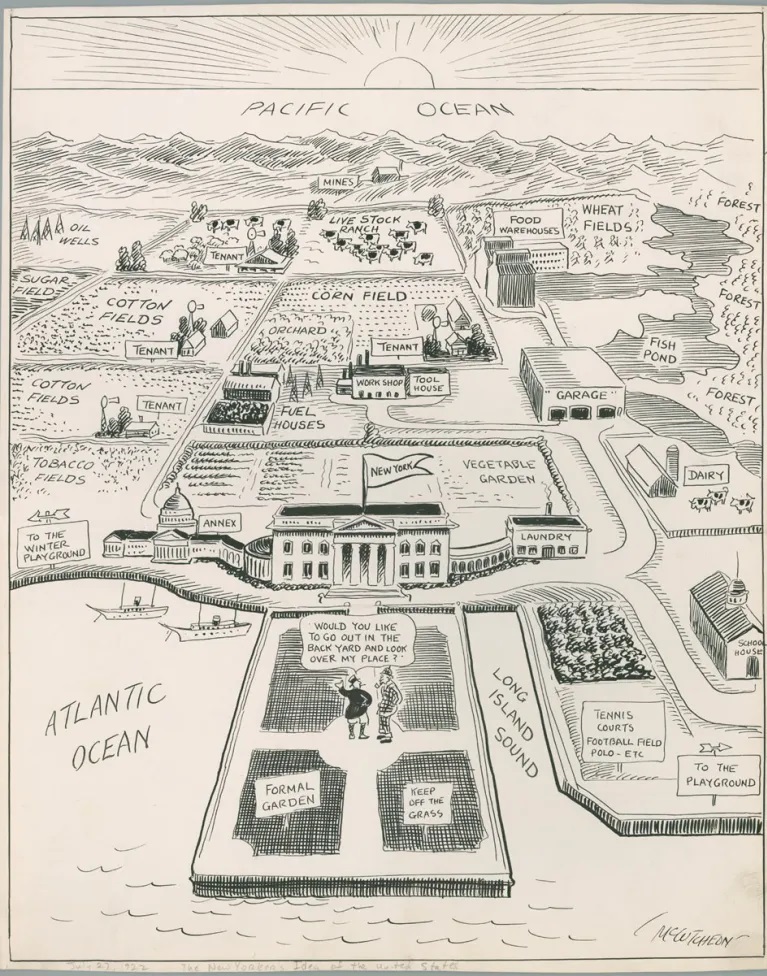
The New Yorkers Map of the United States. John T. McCutcheon, 1922, Chicago Tribune Source
I have discussed sketches and drawings in a separate module that you can find here.
We may think of graphic novels as the combination of drawings and text, but Stacy Leigh Pigg (2015) argues that graphic novels occupy a distinctive position as a third medium, offering unique possibilities that go beyond being mere illustrated texts or drawings accompanied by captions. Reflecting on possibilities this ‘third medium’ would provide, Pigg writes that shots can be utilized to plunge the reader directly into a particular setting, while close-ups can be used to delve into the inner thoughts of characters. Similarly, simplifications can help direct focus, and relationships between individuals are conveyed through gestures, poses, and actions. Panels can be skillfully composed to offer multiple perspectives and guide the reader’s movement. Page layouts can implicitly connect ideas and present arguments about their interrelatedness. This helps to unearth layers to dialogue and dynamics between
Illustrated scene-to-scene panels also capture a sense of being in-motion, this capacity subverts the immobilizing effect that written accounts are often liable to. Graphic depictions also offer an avenue to extend the reach of academic work by encouraging wider engagement; they are candidly intended to be both public and artistic. This makes them particularly valuable to the aim of establishing and building rapport with one’s interlocutors and engaging those that they intend to represent. While anthropology relies on the information and insights of many, the register of academic writing often risks rendering it accessible, desirable, and legible to only few. Depending on the ambitions and intended audience of the ethnography, offering an additional alternate medium for one’s work can be evident of a genuine commitment to engage with those that it depends on.
These are some reasons that some anthropologists have been experimented with the format and are convinced about “the virtues of the format” and believe that it fits “really well with ethnography” (Brackenbury 2015). A good example of how graphic novel as a genre is utilized to represent ethnographic experiences is the ethnoGRAPHIC series published by the University of Toronto Press.
Work Cited
- Brackenbury, Anne. 2015.”How I Learned to Love Comics: An Anthropology Editor Sees the Light.” In: Teaching Culture website. http://www.utpteachingculture.com/how-i-learned-to-love-comics-an-anthropology-editor-sees-the-light/
- Pigg, Stacy Leigh. 2015. “Learning Graphic Novels from an Artist’s Perspective.” In: Teaching Culture website. http://www.utpteachingculture.com/learning-graphic-novels-from-an-artists-perspective/